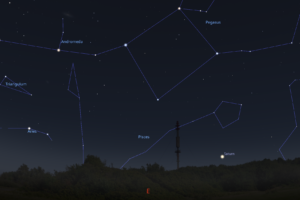During October we have the exciting prospect of a bright comet appearing in the night sky.
Comet 2023 A3 Tsuchinshan-ATLAS was discovered in early 2023 by two separate astronomical surveys—Tsuchinshan (Zijinshan Observatory in China) and ATLAS (Asteroid Terrestrial-impact Last Alert System in South Africa). The pronounciation of the Chinese component of the name is “Zoo-jin-shahn” and it derives from the name of the observatory from where it was discovered: Purple Mountain Observatory. Astronomers frequently abbreviate comets to the alpha-numeric designation; in this case 2023 A3.
UPDATE (14-Oct-2024)! I saw the comet for the first time this evening. It was easily visible by about 7.45pm over the western horizon.
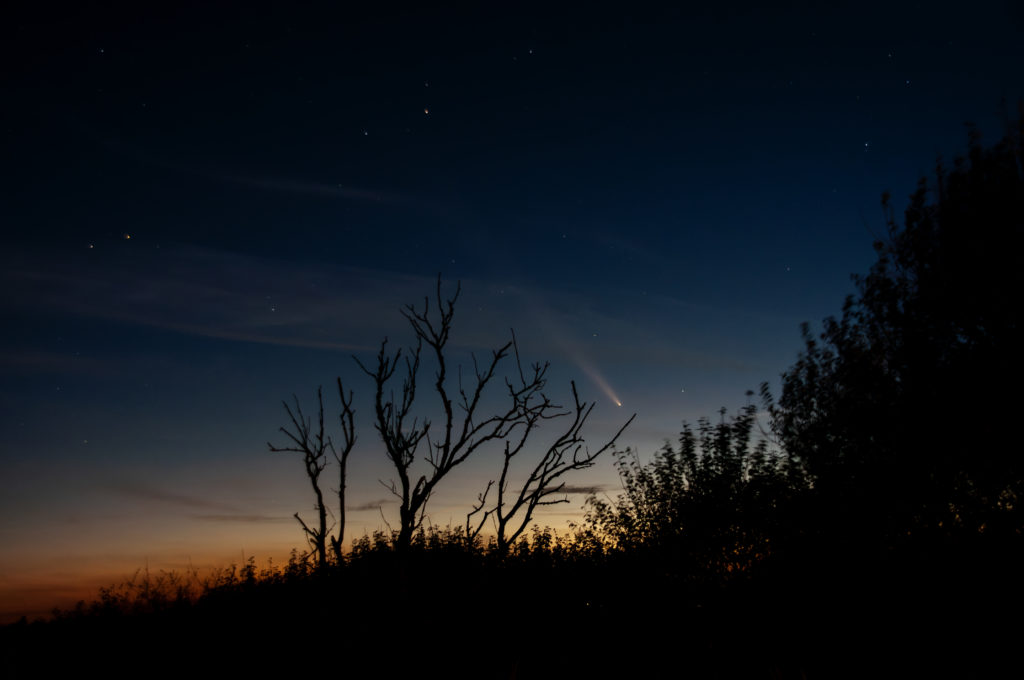
The comet made its closest approach to the Sun in late September and will pass closer to the Earth as it leaves the inner solar system. During late September the comet became visible to the naked eye from the southern hemisphere before passing between the Earth and Sun. When the comet reappears during the second week of October it should be a fine sight in the evening sky after sunset for UK observers too.

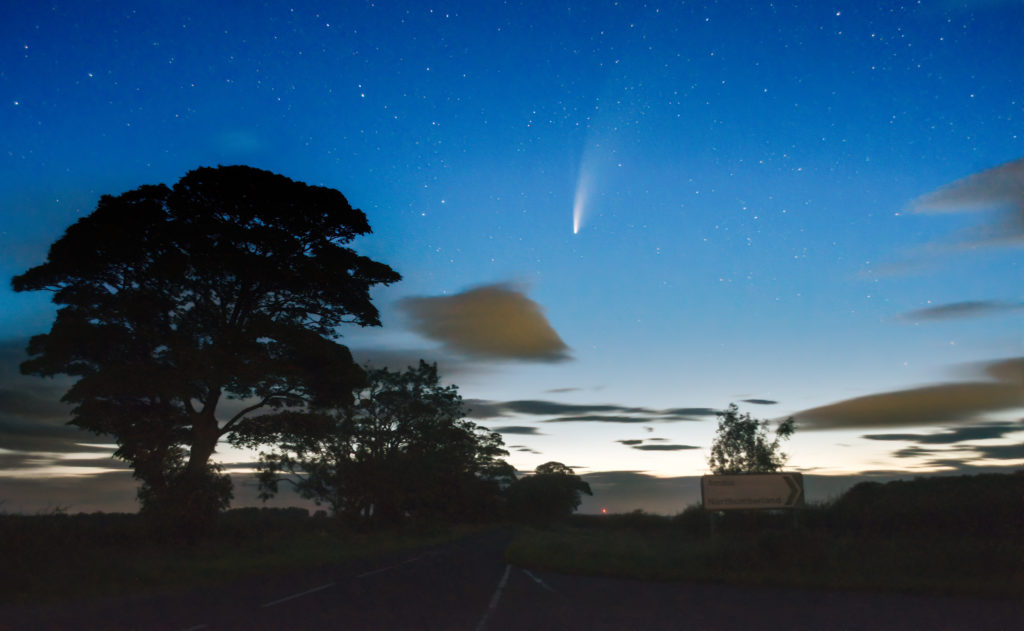
What is a comet?
Comets are small celestial bodies composed of ice, dust, and rocky material, often described as “dirty snowballs” of the solar system. They originate from the distant, icy regions beyond Neptune, specifically the Kuiper Belt and the Oort Cloud. Comets orbit the Sun in highly elongated paths, and as they approach the inner solar system, the Sun’s heat causes their icy components to sublimate. This process releases gas and dust, forming a glowing coma around the nucleus and often creating spectacular tails that can stretch for millions of kilometers, always pointing away from the Sun due to the solar wind.
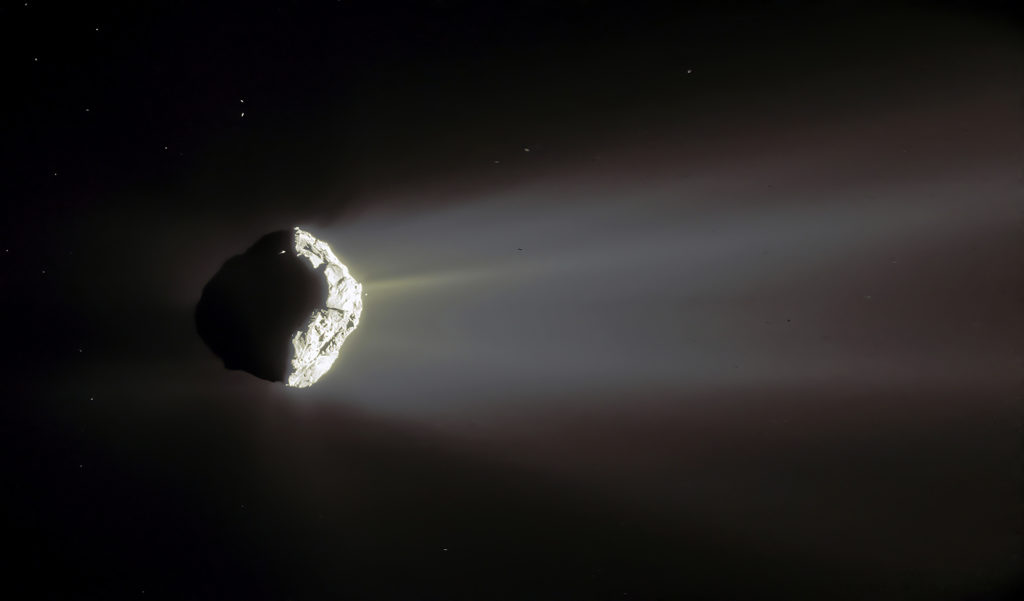
Where to find Comet 2023 A3 Tsuchinshan-ATLAS
2023 A3 should be visible after sunset from around 12th-13th of October when it is closest to Earth – around 71 million km (44 million miles). At that time it will be low on the western horizon and only visible for a short period after sunset. Each evening it will climb higher in the sky becoming easier to see and visible for longer in a darker sky. At the same time – the comet is getting further from the Sun, so it is expected to fade as activity caused by solar heating reduces. By November you’ll likely need a telescope to see the comet as it begins its 40,000 year journey back out to the frozen outer reaches of the outer solar system.
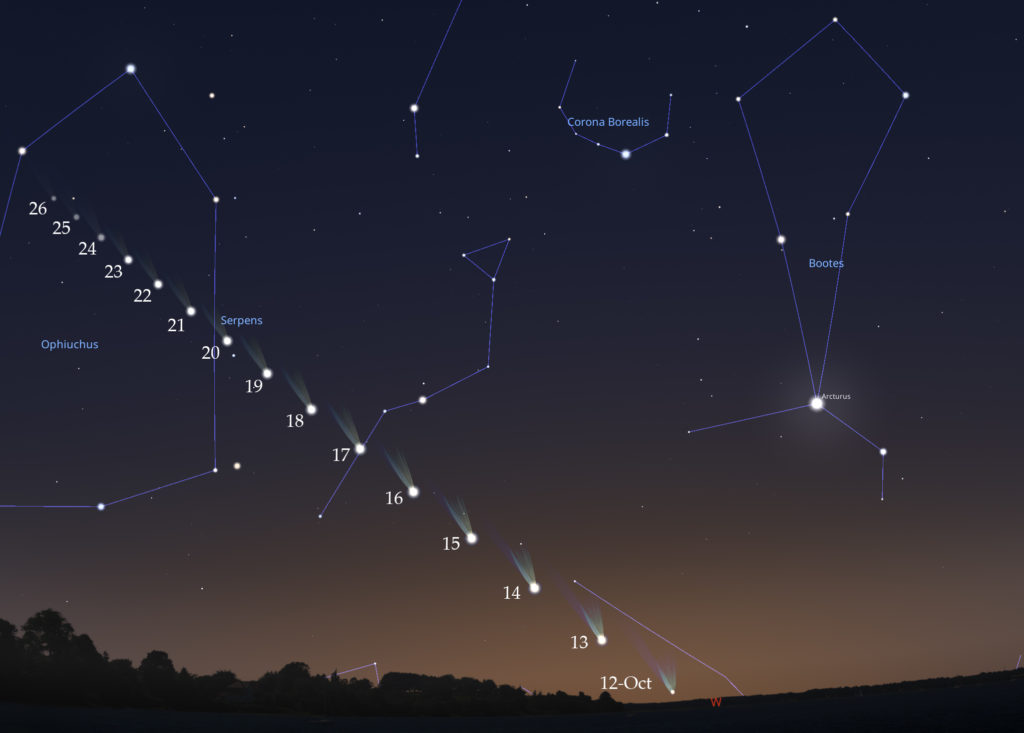
Comets are unpredictable! No one is exactly sure how bright 2023 A3 will become. Optimistic predictions suggest it may become as bright as the planet Venus. In that case it would easily surpass Comet NEOWISE (2020 F3) which appeared in our skies in July 2020. There are lots of variables at play including how much dust gets released by the solar heating as the comet passes the Sun. More dust will scatter more sunlight making it brighter against an evening twilight sky. We’ll have to wait and see. As the astronomer David H. Levy put it: “comets are like cats; they have tails and do precisely what they want”.
Taking pictures of the comet
Comet 2023 A3 was visible earlier in the year from the UK. I captured the rather unimpressive view on the left with my telescope in April when it was 302 million km (188 million miles) from Earth. When the comet was approaching the Sun in September it became possible to capture it with DSLRs and mobile phone cameras (image, right).
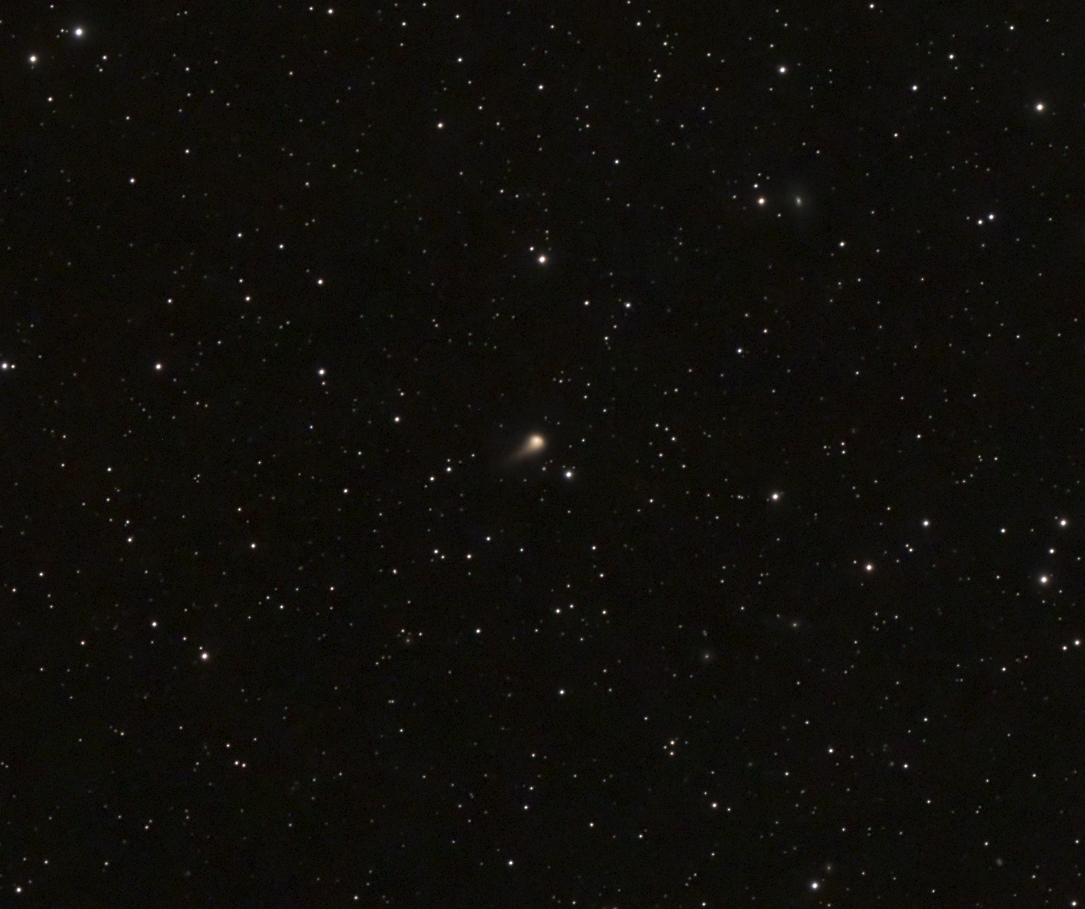
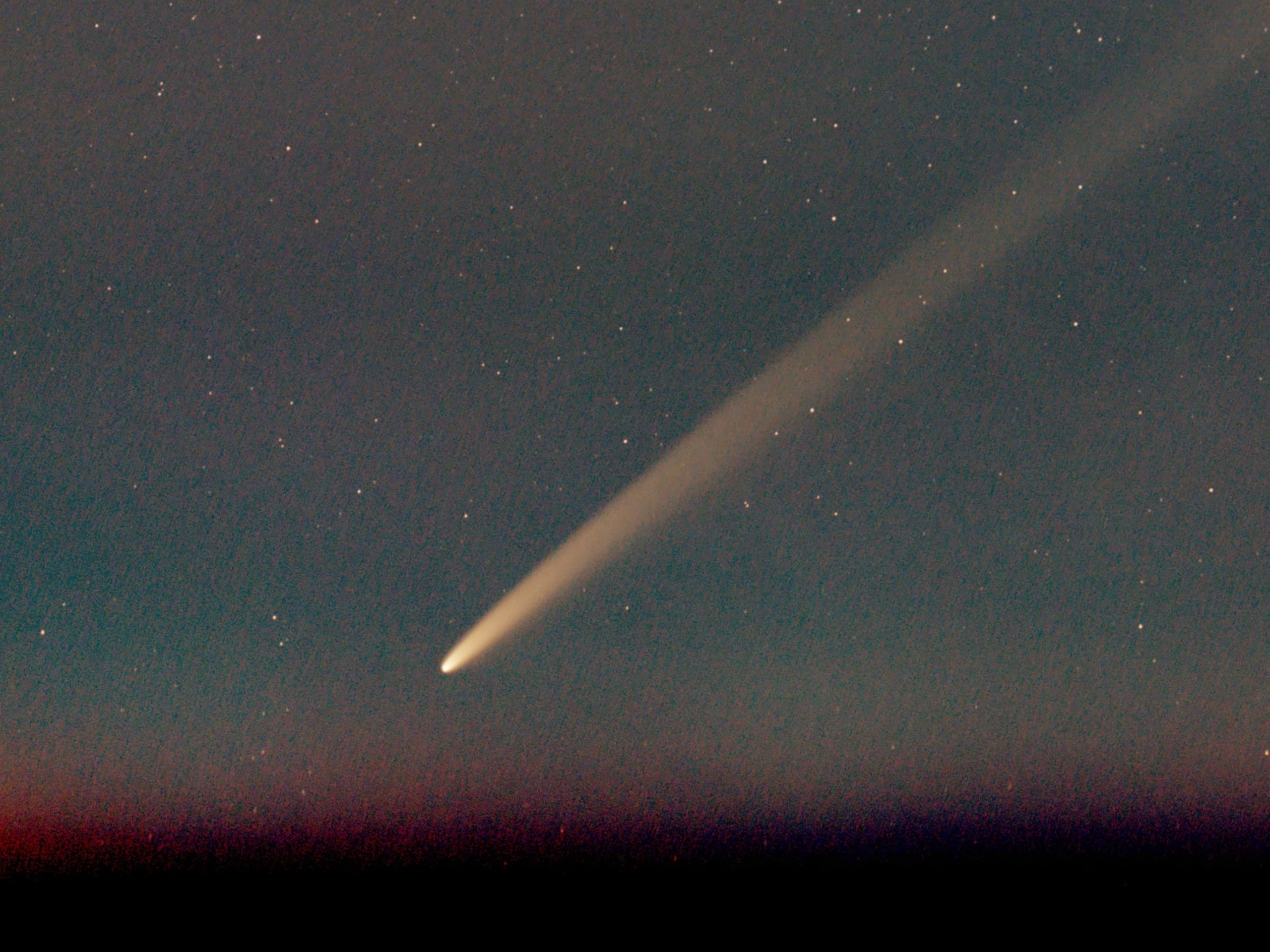
When the comet reappears in the evening sky from the UK it should make for some spectacular photos! In a twilight sky a DSLR camera should be tripod mounted. Phone cameras need “night-mode” or if you’re confident enough – look for the pro settings to better control over exposure and ISO.
Single shots of the comet with an interesting forground using widefield lenses will probably be the easiest to take. The sky might be light enough to allow automatic focussing on distant landmarks, or on the comet itself. In widefield pictures – at say 18mm – the comet tail might stretch right across the picture.
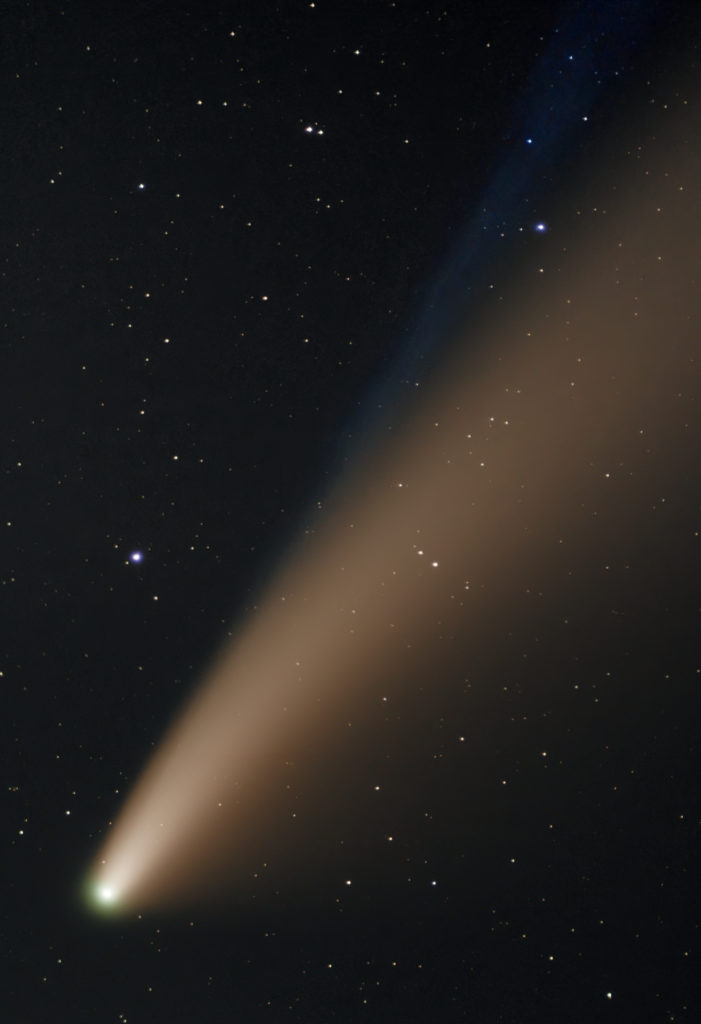
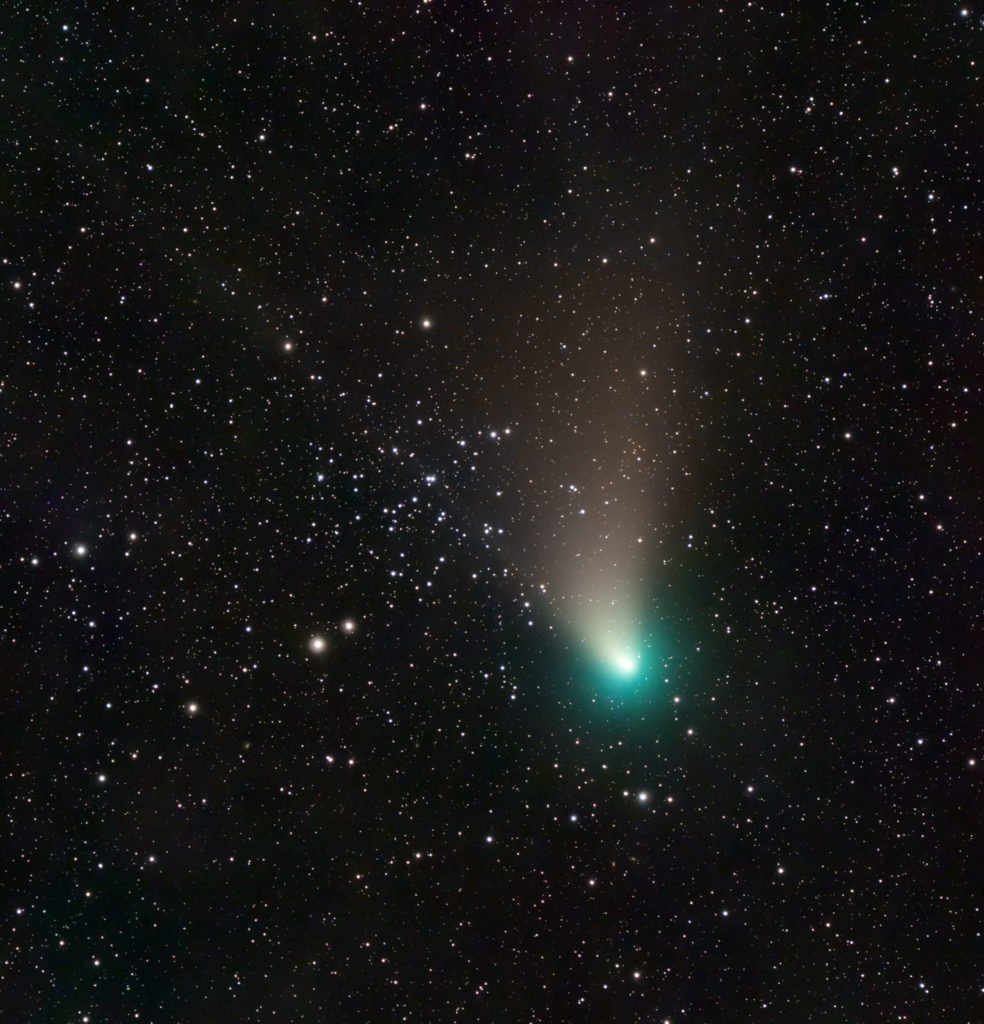
The tail of a comet can show a lot of structure. To capture some this detail you might want to take multiple images and stack them using software to improve the visibility. A good free choice for this is Sequator. Images can be dragged and dropped into the software and the stacking can be done largely automatically.
Summary
Comet 2023 A3 Tsuchinshan-ATLAS should become visible from the UK during the second week of October. Look west about an hour after sunset to find it. It will get higher in the sky, fading as it does.
When a comet becomes bright enough to have a lasting, cultural impact then usually becomes remembered as a Great Comet. That calibre of comet visit our skies rarely; perhaps once per decade. As I write this – hopes are high that Comet 2023 A3 will become the next Great Comet but only time will tell.
Clear skies!
Adrian



